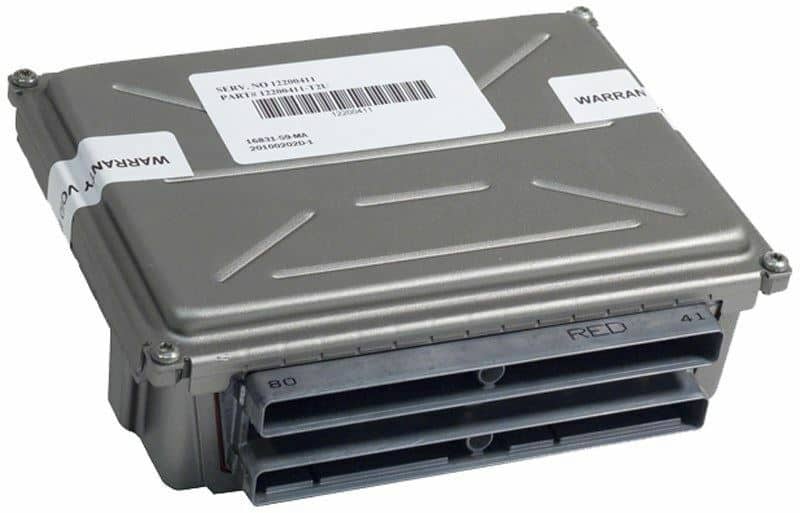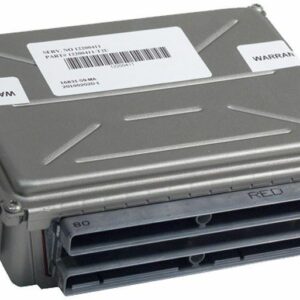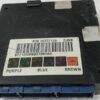Restore Your Truck’s Core Performance and Reliability
Is your 1999-2000 Sierra 2500 acting up? Frustrating issues like a persistent Check Engine Light, poor fuel mileage, erratic shifting, or even a no-start condition often point to one critical component: the Powertrain Control Module (PCM). As the central computer for your truck, a failing PCM can cause a cascade of problems that are difficult to diagnose. This isn’t just an inconvenience; it affects your truck’s safety, emissions, and performance. We offer a dependable, straightforward solution to get your workhorse running right again.
This is a direct-fit replacement PCM, part number 09354896, that arrives at your door fully programmed to your truck’s specific Vehicle Identification Number (VIN). We handle the complex part for you. By flashing the module with the latest official GM software updates before shipping, we eliminate the need for an expensive trip to the dealership. This ensures all factory parameters for your engine and transmission are perfectly calibrated, restoring the smooth operation you expect from your Sierra.
Case Study: A Tricky Diagnosis
I remember a 2000 Silverado 2500 (which uses the same platform and PCM as the Sierra) that came into my shop with a maddeningly intermittent stalling problem. The owner had already replaced the fuel pump and crank sensor with no luck. The truck would run fine for days, then die at a stoplight without warning. No consistent codes were stored, just a history of random communication faults. After ruling out wiring issues, we hooked up a scope to the PCM’s power and ground circuits. We found that the 5-volt reference signal would occasionally dip, causing the sensors to drop out and the engine to stall. This internal voltage regulator failure is a classic sign of a dying PCM. A new, properly programmed module fixed the issue for good. It’s a reminder that with modern vehicles, the computer itself can be the root mechanical-seeming failure.
Is Your Sierra Exhibiting These PCM Failure Signs?
A faulty PCM can manifest in numerous ways. If you’re experiencing any of the following, this module is the likely solution:
- ✔ Persistent Check Engine Light (CEL) with internal module codes like P0601, P0602, P0605, or P0606.
- ✔ Unexplained drop in fuel economy.
- ✔ The engine cranks but refuses to start.
- ✔ Harsh or erratic automatic transmission shifting.
- ✔ Communication errors with diagnostic scan tools.
- ✔ Stalling for no apparent reason, either at idle or while driving.
- ✔ Failure to pass an emissions or smog test.
A Straightforward Guide to Installation
Replacing the 1999-2000 Sierra 2500 PCM is a job most DIYers can handle in their own driveway. It is located under the hood on the driver’s side, below the battery tray.
- Safety First: Disconnect the negative terminal from your truck’s battery and secure it away from the post to prevent any accidental reconnection.
- Access the Module: You will likely need to remove the battery and the battery tray to gain clear access to the PCM. Keep track of all bolts and fasteners.
- Disconnect the Harnesses: The PCM has several large electrical connectors. Carefully release the locking tabs or levers on each connector and pull them straight out from the module. Do not force them.
- Remove the Old PCM: Unbolt the old module from its mounting bracket.
- Install the New PCM: Mount your new, pre-programmed PCM onto the bracket and securely fasten it.
- Reconnect Everything: Plug the electrical harnesses back into the new module, ensuring they click securely into place. Reinstall the battery tray and the battery.
- Perform Security Relearn: Reconnect the negative battery terminal. You will likely need to perform a security relearn procedure (often called a VATS or Passlock relearn) to sync the new PCM with your truck’s anti-theft system. This procedure typically involves turning the key to the ‘ON’ position for 10-15 minutes. Consult your owner’s manual or a reliable online resource for the exact steps for your vehicle.
Verified Fitment for Your GM Vehicle
This electronic control module is a guaranteed fit for a wide range of GM vehicles. It is a direct replacement for part numbers 09354896, 19109040, and 9354896. Please verify your vehicle is on the list below:
- ✔ CAMARO: 1999-2002 (5.7L)
- ✔ CORVETTE: 1999-2000
- ✔ FIREBIRD: 1999-2002 (5.7L)
- ✔ SIERRA 1500 PICKUP: 1999-2000 (8 cylinder)
- ✔ SIERRA 2500 PICKUP: 1999-2000
- ✔ SILVERADO 1500 PICKUP: 1999-2000 (8 cylinder)
- ✔ SILVERADO 2500 PICKUP: 1999-2000
- ✔ SUBURBAN 1500/2500: 2000
- ✔ TAHOE: 2000 (Silverado Style)
- ✔ YUKON: 2000 (exc. Denali)
- ✔ YUKON XL 1500/2500: 2000
Do I need to do any programming myself?
Do I need to do any programming myself?
No. We program the module to your vehicle’s VIN before we ship it. It arrives ready for installation and the final security relearn procedure, saving you a trip to a mechanic or dealer.
Where do I find my VIN?
Your 17-digit Vehicle Identification Number (VIN) can be found on your vehicle’s registration, insurance card, or on a metal plate on the driver’s side of the dashboard, visible through the windshield.
Will this fix my transmission shifting problems?
In many cases, yes. The PCM controls the transmission’s shift points and line pressure. If the module is failing, it can cause hard shifts, delayed shifting, or slipping. A new, correctly programmed PCM often resolves these electronic-based transmission issues.
What is the security relearn procedure?
This is a simple procedure that syncs the new PCM to your vehicle’s anti-theft system so the engine will start. It typically involves turning the ignition key to ‘ON’ (without starting the engine) for about 10-15 minutes, then off, and then starting the vehicle. The exact steps can vary slightly, so it’s good to check a service manual for your specific model.
Is this a reliable replacement for my 1999-2000 Sierra 2500 PCM?
Absolutely. This is a quality electronic control module that meets or exceeds original equipment specifications. By programming it with the latest GM software, we ensure it provides optimal performance and long-term reliability for your truck.



